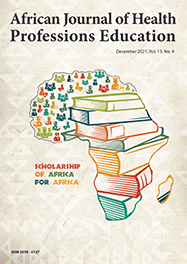Research

Is temperament a key to the success of teaching innovation?
Abstract
A section of the undergraduate curriculum was revised due to consistently poor student evaluation. The chosen didactic method for achieving this change was reciprocal peer teaching. This innovation may have required academic members of staff to adapt to a new teaching style.
Method
Staff members determined their Keirsey temperament and were given a report on its interpretation. They participated in training on student-focused teaching techniques and completed the Approaches to Teaching Inventory (ATI) of their preferred approach to teaching. Their subsequent sessions with students were videotaped and analysed for features of student-focused, as opposed to teacher-focused teaching.
Results
There was a link between temperament type and apparent delivery of student-focused teaching. Staff member’s perceptions of their approach to teaching did not correspond to their actual teaching behaviour.
Discussion
Staff development strategies could take into account individual’s temperaments in order to direct their professional development for the full spectrum of flexible teaching skills. Alternatively teaching teams should be created in a way that takes account of different temperament types.
Conclusion
Temperament does play a key role in adaptation to innovation.
Authors' affiliations
Julia Blitz, Penang Medical College
Marietjie van Rooyen, University of Pretoria
David Cameron, University of Pretoria
Glynis Pickworth, University of Pretoria
Pieter du Toit, University of Pretoria
Keywords
Cite this article
Article History
Date published: 2010-08-13
Article Views
Full text views: 10436




.jpg)
Comments on this article
*Read our policy for posting comments here